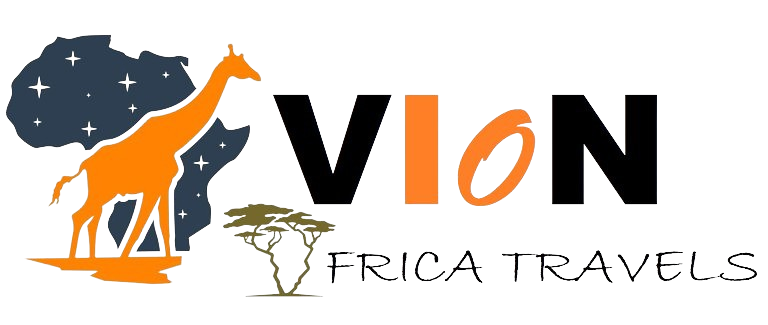Tanzania is a country rich in cultural diversity, reflected in its many languages and dialects. Home to over 120 ethnic groups, this East African nation boasts a linguistic tapestry that blends indigenous languages with those introduced through historical trade, colonization, and migration. Understanding the languages spoken in Tanzania offers insight into its cultural heritage, social dynamics, and how communication plays a central role in shaping its identity.
In this article, we’ll explore the languages spoken in Tanzania, their historical background, and the role they play in the country’s everyday life. From Swahili, the national language, to indigenous languages and the influence of colonial languages like English, you’ll gain a deeper appreciation for Tanzania’s linguistic landscape.
A Brief History of Languages in Tanzania
To understand the linguistic diversity in Tanzania, it is essential to look back at the country’s history. Tanzania’s linguistic evolution has been shaped by its indigenous cultures, Arab traders, European colonization, and post-independence efforts to create a unified nation.
Pre-Colonial Period
Before the arrival of outsiders, Tanzania was inhabited by various Bantu-speaking communities. The Bantu people migrated into the region thousands of years ago, bringing with them their languages and cultures. The Bantu languages, still spoken today, dominate much of Tanzania’s linguistic landscape. Other smaller groups, such as the Cushitic-speaking peoples in the north and the Nilotic-speaking Maasai, also contributed to the diversity.
Arab Influence
In the 8th century, Arab traders began frequenting the East African coast, establishing trading posts and cities, including Zanzibar. The Arab influence led to the rise of Swahili, a language that originated as a trade lingua franca, blending Arabic and Bantu languages. Swahili grew in prominence as trade between Africa, the Middle East, and Asia flourished.
European Colonization
In the late 19th century, Tanzania came under German colonial rule. While the Germans attempted to impose their language, Swahili remained the dominant lingua franca due to its widespread use along the coast and its established position as a trade language. After World War I, Tanzania became a British mandate, and English was introduced as the language of administration and education.
Post-Independence Era
When Tanzania gained independence in 1961, its first president, Julius Nyerere, promoted Swahili as a national language to foster unity and a sense of identity. This decision was critical in creating a shared national language that transcended ethnic divisions. English, however, remained an official language and is still widely used in government, education, and business.
The National Language: Swahili (Kiswahili)
Swahili, known locally as Kiswahili, is the national language of Tanzania and one of the most widely spoken languages in East Africa. It serves as the primary language of communication for most Tanzanians, bridging the gap between the country’s various ethnic groups.
The Origins of Swahili
Swahili originated on the East African coast, where it evolved as a lingua franca used by traders from Africa, the Middle East, and Asia. Over time, it developed into a full-fledged language, incorporating elements of Bantu languages and Arabic. The word “Swahili” itself comes from the Arabic word “sawāḥilī,” meaning “coastal dwellers.”
Swahili in Modern Tanzania
Today, Swahili is spoken by almost everyone in Tanzania, either as a first or second language. It is the language of government, education, media, and everyday communication. Even in rural areas where people speak their ethnic languages, Swahili serves as the common tongue.
Swahili is also the language of instruction in primary schools. This has helped to ensure widespread fluency across the country, as nearly all Tanzanians attend primary school. In addition, the Tanzanian government uses Swahili in official communication, making it a vital part of the country’s national identity.
Swahili Beyond Tanzania
Swahili’s influence extends beyond Tanzania’s borders. It is spoken in several East African countries, including Kenya, Uganda, the Democratic Republic of Congo, and Mozambique. Swahili is also one of the official languages of the African Union, highlighting its importance as a regional language.
The Role of English in Tanzania
English is the second official language in Tanzania, primarily used in formal settings such as government, business, and higher education. Its role in Tanzanian society reflects the country’s colonial past and ongoing globalization.
English in Education
While Swahili is the language of instruction in primary schools, English takes over in secondary schools and universities. This can create challenges for students, as they must transition from Swahili-based education to English-based education, often with limited preparation. Despite these challenges, English proficiency is seen as crucial for success in professional and academic fields.
English in Business and Government
English is widely used in Tanzania’s business sector, particularly in industries that engage with international markets, such as tourism, banking, and telecommunications. Government documents, laws, and regulations are often published in both Swahili and English, making it an important language for official matters.
Challenges with English Proficiency
While many Tanzanians have a basic understanding of English, fluency levels vary significantly, particularly between urban and rural areas. Efforts to improve English language education are ongoing, but Swahili remains the dominant language in most social interactions.
Indigenous Languages of Tanzania
In addition to Swahili and English, Tanzania is home to over 120 indigenous languages, reflecting the country’s rich ethnic diversity. These languages are an integral part of the country’s cultural fabric, spoken primarily within specific ethnic communities.
Bantu Languages
The majority of Tanzania’s indigenous languages belong to the Bantu language family. Bantu languages are spoken by approximately 70% of Tanzania’s population, with prominent languages including:
- Chagga: Spoken by the Chagga people in the Kilimanjaro region.
- Sukuma: Spoken by the Sukuma people, Tanzania’s largest ethnic group, mainly in the Mwanza and Shinyanga regions.
- Haya: Spoken in the northwest near Lake Victoria.
- Nyakyusa: Found in the southern highlands near Lake Malawi.
Each of these languages is deeply tied to the culture and identity of the ethnic group that speaks it. While Swahili serves as the common language, these indigenous languages are often used within communities for everyday conversation, storytelling, and ceremonies.
Nilotic Languages
The Nilotic-speaking peoples, including the Maasai and the Luo, are another significant linguistic group in Tanzania. The Maasai, known for their pastoralist lifestyle, primarily live in northern Tanzania and speak Maa, their indigenous language. Despite adopting Swahili for wider communication, the Maasai take pride in preserving their language and traditions.
Cushitic and Khoisan Languages
A smaller percentage of Tanzanians speak Cushitic and Khoisan languages. Cushitic languages, such as Iraqw and Gorowa, are spoken in the northern regions, while the Khoisan language group is represented by the Hadza people, one of the last remaining hunter-gatherer communities in the world.
The Role of Indigenous Languages Today
While Swahili has largely become the dominant language, indigenous languages continue to play a vital role in preserving cultural identity and heritage. In rural areas, these languages remain the primary means of communication within families and communities. However, there is growing concern about the decline of some indigenous languages as younger generations increasingly adopt Swahili and English.
Language and Culture in Tanzania
Tanzania’s languages are more than just tools for communication; they are deeply intertwined with the country’s cultural traditions, values, and way of life. Understanding the languages spoken in Tanzania offers a window into the country’s rich and diverse culture.
Storytelling and Oral Traditions
In many Tanzanian communities, oral traditions play a crucial role in passing down history, morals, and values. Stories, proverbs, and songs are used to teach lessons and preserve cultural heritage. These oral traditions are often performed in indigenous languages, adding to the cultural significance of language in Tanzanian society.
Language and Identity
For many Tanzanians, language is closely tied to their ethnic identity. Speaking an indigenous language is a way of maintaining a connection to one’s heritage and ancestors. At the same time, Swahili serves as a unifying force, helping to foster national unity and a sense of shared identity among the country’s diverse population.
Language in Tanzanian Music and Art
Tanzanian music and art are also influenced by the country’s linguistic diversity. Swahili is often used in popular music genres such as Bongo Flava, a form of Tanzanian hip hop that has gained international popularity. Traditional music, however, often features indigenous languages, reflecting the cultural roots of the performers.
The Future of Languages in Tanzania
Tanzania’s linguistic landscape is continually evolving, shaped by factors such as urbanization, globalization, and education. As the country develops, there is a growing emphasis on bilingualism in Swahili and English, especially in education and the job market.
However, efforts are also being made to preserve Tanzania’s indigenous languages. Cultural preservation initiatives, such as documenting endangered languages and promoting their use in schools and community activities, aim to ensure that these languages continue to thrive alongside Swahili and English.
Conclusion
Tanzania’s linguistic diversity is a testament to the country’s rich cultural heritage and history. From the widespread use of Swahili as a national language to the preservation of indigenous tongues, language plays a crucial role in shaping Tanzania’s identity. For visitors, understanding the languages spoken in Tanzania provides a deeper connection to the people and cultures of this vibrant East African nation.
Whether you’re conversing in Swahili, listening to Maasai songs in Maa, or learning a few phrases in a local dialect, language is key to experiencing Tanzania’s unique cultural mosaic. As you plan your trip with Vion Africa Travels, remember that language is not just about words; it’s a gateway to understanding the heart and soul of Tanzania.


